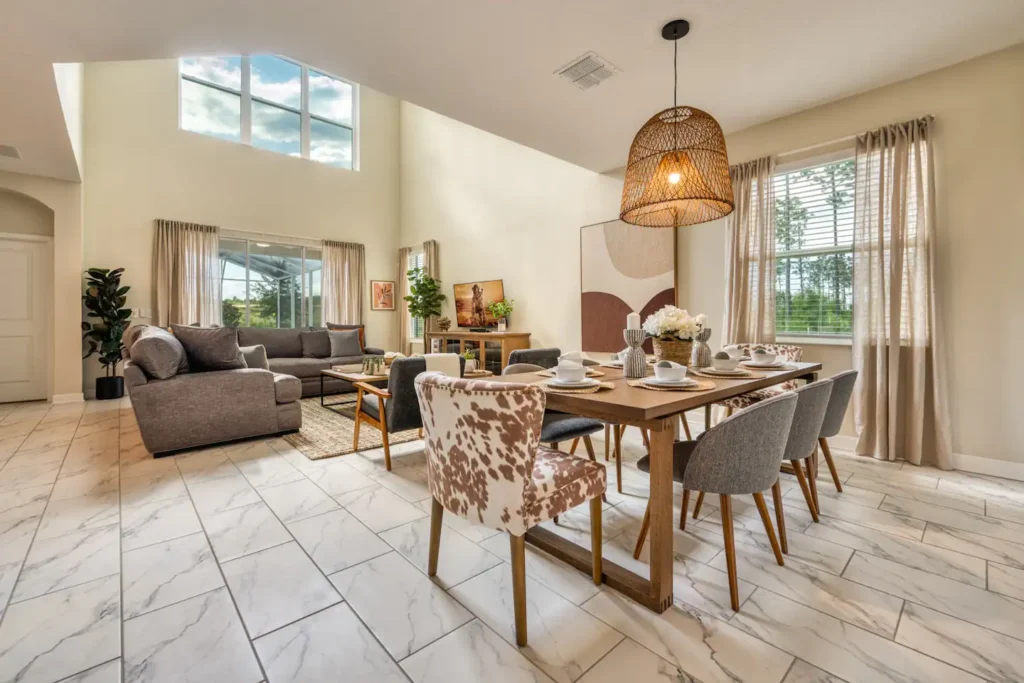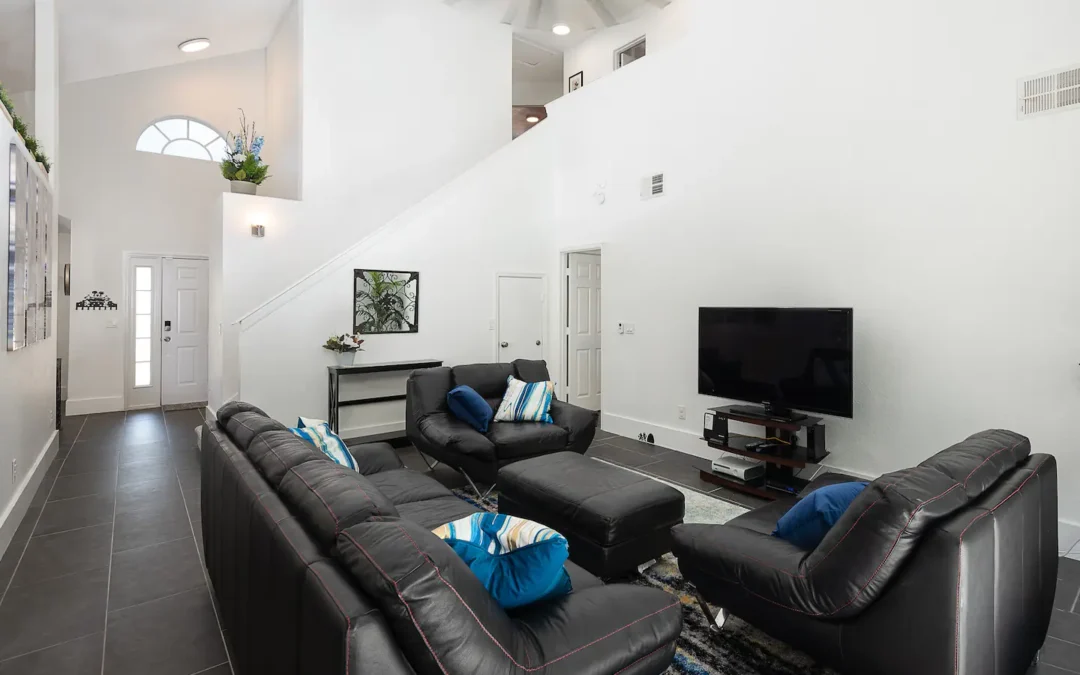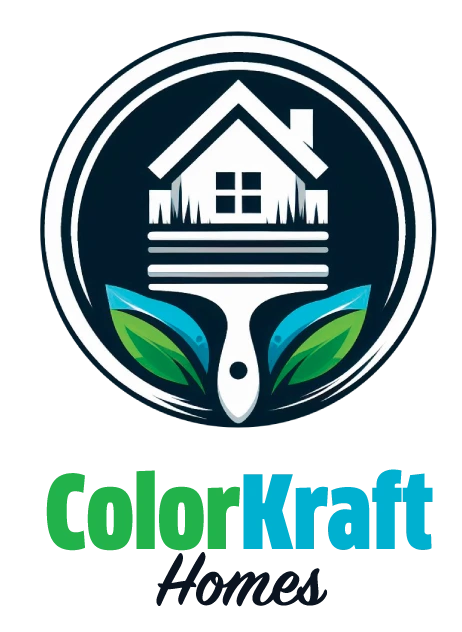DIY house painting has become increasingly popular in recent years, as more and more homeowners are discovering the benefits of taking on this task themselves. Not only does DIY house painting offer significant cost savings compared to hiring a professional painter, but it also provides a sense of accomplishment and pride when you see the finished result. Additionally, DIY house painting allows for flexibility and control over the entire process, from choosing the right paint to applying it to your home’s interior or exterior surfaces.
Key Takeaways
- DIY house painting can save you money and give you a sense of accomplishment.
- Choosing the right paint for your home involves considering factors like color, finish, and durability.
- Preparing your home for painting involves cleaning surfaces, repairing damage, and protecting furniture and floors.
- Essential tools and equipment for DIY house painting include brushes, rollers, drop cloths, and painter’s tape.
- Tips for achieving a professional finish include using quality materials, applying paint evenly, and avoiding drips and streaks.
The Benefits of DIY House Painting
One of the most obvious benefits of DIY house painting is the cost savings it offers. Hiring a professional painter can be quite expensive, especially if you have a large home or multiple rooms to paint. By taking on the task yourself, you can save a significant amount of money that can be put towards other home improvement projects or saved for future expenses.
Another benefit of DIY house painting is the sense of accomplishment and pride that comes with completing a painting project on your own. There is something incredibly satisfying about transforming your home with a fresh coat of paint and knowing that you did it yourself. It allows you to take ownership of your home and make it truly your own.
In addition to cost savings and a sense of accomplishment, DIY house painting also offers flexibility and control. When you hire a professional painter, you are limited to their schedule and availability. By doing it yourself, you can work at your own pace and on your own timeline. You also have complete control over the color, finish, and technique used, allowing you to create the exact look and feel you desire for your home.
Choosing the Right Paint for Your Home
Choosing the right paint for your home is an important decision that can greatly impact the overall look and feel of your space. There are several different types of paint available, each with its own benefits and considerations.
Latex paint is one of the most popular choices for interior painting. It is easy to clean up with water, dries quickly, and has low levels of volatile organic compounds (VOCs), making it a more environmentally friendly option. Latex paint is also available in a wide range of colors and finishes, allowing for endless possibilities when it comes to creating the perfect look for your home.
Oil-based paint is another option for interior painting, although it is less commonly used today due to its strong odor and longer drying time. However, oil-based paint does offer a more durable and long-lasting finish, making it a good choice for high-traffic areas or surfaces that are prone to wear and tear.
When it comes to exterior painting, it is important to choose a paint that can withstand the elements and provide long-lasting protection for your home. Acrylic paint is a popular choice for exterior surfaces, as it is durable, flexible, and resistant to cracking, peeling, and fading. It also offers excellent adhesion to a variety of surfaces, making it suitable for use on wood, metal, and masonry.
In addition to choosing the right type of paint, it is also important to consider the color and finish. The color you choose can greatly impact the overall mood and atmosphere of your space. Lighter colors can make a room feel larger and more open, while darker colors can create a cozy and intimate atmosphere. The finish refers to the sheen or glossiness of the paint and can range from flat (no shine) to high gloss (very shiny). The finish you choose will depend on the look you want to achieve and the level of durability you require.
Preparing Your Home for Painting
| Area | Task | Time Required | Difficulty Level |
|---|---|---|---|
| Interior Walls | Clean walls with soap and water | 1-2 hours | Easy |
| Exterior Walls | Power wash walls to remove dirt and debris | 2-4 hours | Moderate |
| Doors and Windows | Remove hardware and sand surfaces | 2-3 hours | Moderate |
| Trim and Molding | Fill gaps and holes with wood filler | 1-2 hours | Easy |
| Floors | Cover floors with drop cloths or plastic sheeting | 30 minutes | Easy |
Before you start painting, it is important to properly prepare your home to ensure a smooth and long-lasting finish. This includes cleaning the surfaces to be painted, repairing any damage or imperfections, and protecting surrounding areas from paint splatters or spills.
Start by cleaning the surfaces to be painted with a mild detergent and water solution. This will remove any dirt, grease, or grime that could interfere with the adhesion of the paint. Use a sponge or soft cloth to gently scrub the surfaces, and be sure to rinse thoroughly with clean water to remove any residue.
Next, inspect the surfaces for any damage or imperfections, such as cracks, holes, or peeling paint. Repair these areas using a suitable filler or patching compound, and allow it to dry completely before proceeding. Sand the repaired areas smooth with fine-grit sandpaper, and wipe away any dust with a damp cloth.
To protect surrounding areas from paint splatters or spills, cover furniture, floors, and fixtures with drop cloths or plastic sheeting. Use painter’s tape to mask off trim, windows, and other areas that you do not want to paint. This will ensure clean lines and a professional-looking finish.
Essential Tools and Equipment for DIY House Painting
To successfully complete a DIY house painting project, it is important to have the right tools and equipment on hand. Investing in quality tools will not only make the job easier and more efficient but also ensure a professional-looking finish.
Some essential tools for DIY house painting include:
– Paintbrushes: Choose brushes with synthetic bristles for latex paint and natural bristles for oil-based paint. Different sizes and shapes of brushes are available for different areas and techniques.
– Rollers: Use rollers with different nap lengths depending on the texture of the surface being painted. Shorter nap lengths are suitable for smooth surfaces, while longer nap lengths are better for textured surfaces.
– Paint trays: Use trays with liners for easy cleanup and to prevent cross-contamination of colors.
– Extension poles: These are useful for reaching high or hard-to-reach areas without the need for a ladder.
– Paint sprayers: Sprayers can be used for larger areas or when a smooth, even finish is desired. However, they require more skill and practice to use effectively.
In addition to these basic tools, it is also important to have other supplies on hand, such as drop cloths, painter’s tape, sandpaper, patching compound, and cleaning supplies. Having everything you need before you start painting will save you time and frustration and ensure a smoother painting process.
Tips for Achieving a Professional Finish

Achieving a professional finish when DIY house painting requires proper technique and attention to detail. Here are some tips and tricks to help you achieve the best results:
– Start with a clean and smooth surface: As mentioned earlier, proper preparation is key to a professional-looking finish. Make sure to clean the surfaces thoroughly and repair any damage or imperfections before painting.
– Use high-quality paint: Investing in high-quality paint will not only provide better coverage but also result in a more durable and long-lasting finish. Cheap paint may require multiple coats and may not hold up well over time.
– Use the right tools: Using the right brushes, rollers, and other tools for the job will make a big difference in the final result. Choose brushes with the appropriate bristles for the type of paint being used and use rollers with the correct nap length for the surface being painted.
– Apply paint in thin, even coats: Avoid applying too much paint at once, as this can lead to drips, runs, or an uneven finish. Instead, apply thin coats of paint and allow each coat to dry completely before applying the next.
– Use proper technique: When using a brush, use long, smooth strokes in the direction of the grain or texture of the surface. When using a roller, use a “W” or “M” motion to evenly distribute the paint. Avoid pressing too hard or going over an area too many times, as this can create streaks or uneven coverage.
– Pay attention to details: Take the time to carefully cut in around trim, windows, and other areas using a brush. Use painter’s tape to create clean lines and prevent paint from bleeding onto adjacent surfaces. Take care to remove tape before the paint dries completely to avoid peeling or tearing.
Creative Painting Techniques to Enhance Your Home’s Interior
In addition to achieving a professional finish, DIY house painting also offers the opportunity to get creative and enhance your home’s interior with unique painting techniques. Here are some creative techniques you can try:
– Color blocking: Create a bold and modern look by painting different sections of a wall or room in contrasting colors. This can be done with straight lines or geometric shapes for added visual interest.
– Ombre effect: Create a gradient effect by blending two or more shades of the same color. Start with the lightest shade at the top and gradually transition to the darkest shade at the bottom.
– Stenciling: Use stencils to add patterns or designs to your walls. This can be done with paint or even wallpaper for a temporary and removable option.
– Faux finishes: Create the look of texture or other materials, such as marble, wood, or brick, using paint and various techniques. This can add depth and visual interest to your walls without the need for expensive materials.
– Accent walls: Choose one wall in a room to paint in a bold or contrasting color to create a focal point. This can be especially effective in rooms with architectural features or when you want to highlight a particular area.
Experimenting with different painting techniques and styles can help you personalize your space and make it truly unique. Don’t be afraid to try something new and have fun with your DIY house painting projects.
Updating Your Home’s Exterior with a Fresh Coat of Paint
While much of the focus on DIY house painting is often on the interior, updating your home’s exterior with a fresh coat of paint can have a significant impact on its curb appeal and overall value. Here are some benefits of updating your home’s exterior with paint:
– Increased curb appeal: A fresh coat of paint can instantly transform the look of your home and make it more visually appealing. This can be especially important if you are planning to sell your home or want to make a good impression on guests or neighbors.
– Protection from the elements: Paint acts as a protective barrier against the elements, such as rain, snow, and UV rays. It helps prevent moisture from seeping into the wood or other materials, which can cause rot, mold, or other damage over time.
– Increased resale value: A well-maintained and freshly painted exterior can significantly increase the resale value of your home. Potential buyers are more likely to be attracted to a home that looks well cared for and requires less immediate maintenance.
When choosing a color for your home’s exterior, it is important to consider the style of your home, the surrounding landscape, and any neighborhood restrictions or guidelines. Neutral colors are often a safe choice and can help your home blend in with its surroundings. However, if you want to make a statement or highlight architectural features, bolder colors can be used.
In addition to choosing the right color, it is also important to choose the right finish for your home’s exterior. Flat or matte finishes are often used for siding or stucco, while semi-gloss or gloss finishes are used for trim and doors. The finish you choose will depend on the level of durability and shine you desire.
How to Paint Like a Pro: Techniques for Perfecting Your Skills
If you are looking to perfect your DIY house painting skills and achieve professional-looking results, there are several advanced techniques you can try. Here are some tips to help you paint like a pro:
– Use a primer: Applying a primer before painting can help improve adhesion, coverage, and durability. It also helps to seal porous surfaces and prevent stains or bleed-through.
– Cut in with a brush: Cutting in refers to painting the edges and corners of a room or surface using a brush before using a roller. This helps create clean lines and prevents paint from bleeding onto adjacent surfaces.
– Use a wet edge: When using a roller, it is important to maintain a wet edge to avoid lap marks or visible lines. This can be achieved by working in small sections and overlapping each stroke while the paint is still wet.
– Feather out brush strokes: To create a smooth and even finish with a brush, use long, smooth strokes and lightly feather out the brush strokes as you go. This will help blend the paint and create a seamless finish.
– Sand between coats: If you are applying multiple coats of paint, it is important to sand between coats to ensure a smooth and even finish. Use fine-grit sandpaper or a sanding sponge to lightly sand the surface, and wipe away any dust before applying the next coat.
– Use a paint extender: Adding a paint extender to your paint can help improve flow and leveling, resulting in a smoother finish. It also extends the drying time, allowing for more time to work with the paint and reduce visible brush or roller marks.
– Practice patience: Achieving a professional-looking finish takes time and patience. Take your time, work in small sections, and allow each coat to dry completely before applying the next. Rushing the process can lead to mistakes or an uneven finish.
DIY House Painting on a Budget: Cost-Saving Tips and Tricks
While DIY house painting offers significant cost savings compared to hiring a professional painter, there are still ways to save even more money on your painting project. Here are some cost-saving tips and tricks:
– Plan ahead: Before starting your painting project, take the time to plan and budget accordingly. This includes estimating the amount of paint and supplies you will need, as well as any additional costs, such as renting equipment or hiring help.
– Buy in bulk: Purchasing paint and supplies in bulk can often save you money in the long run. Look for sales or discounts at your local home improvement store, or consider buying from a wholesale supplier.
– Use leftover paint: If you have leftover paint from previous projects, consider using it for your current project. This can help save money and reduce waste. Just make sure the paint is still in good condition and has not expired.
– Borrow or rent equipment: If you do not have all the necessary tools and equipment, consider borrowing or renting them instead of buying. Many home improvement stores offer tool rental services at a fraction of the cost of purchasing new equipment.
– Do the prep work yourself: Hiring a professional painter to do the prep work can be expensive. Instead, take the time to properly prepare your home yourself, as discussed earlier. This can save you money and ensure a better end result.
– Shop around for paint: Different brands and retailers may offer different prices for paint. Take the time to shop around and compare prices before making a purchase. Keep in mind that quality is important, so be sure to choose a reputable brand.
By implementing these cost-saving tips and tricks, you can complete your DIY house painting project without breaking the bank.
Hiring a Professional Painter vs. DIY House Painting: Pros and Cons
 While DIY house painting can be a cost-effective option, hiring a professional painter has its own set of advantages. One of the main pros of hiring a professional painter is their expertise and experience in the field. They have the knowledge and skills to properly prepare surfaces, choose the right paint, and apply it evenly for a flawless finish. Additionally, professional painters often have access to high-quality materials and tools that may not be readily available to DIYers.
While DIY house painting can be a cost-effective option, hiring a professional painter has its own set of advantages. One of the main pros of hiring a professional painter is their expertise and experience in the field. They have the knowledge and skills to properly prepare surfaces, choose the right paint, and apply it evenly for a flawless finish. Additionally, professional painters often have access to high-quality materials and tools that may not be readily available to DIYers.
Another advantage is the time-saving aspect. Painting an entire house can be a time-consuming task, especially for those with limited experience. Hiring a professional allows homeowners to focus on other important tasks while leaving the painting job in capable hands. On the other hand, DIY house painting can be a more affordable option for those on a tight budget. It also allows homeowners to have complete control over the project, from choosing the colors to executing their vision.
However, DIY painting requires careful planning, preparation, and attention to detail to achieve professional-looking results. It can also be physically demanding and time-consuming, especially for larger projects. Ultimately, the decision between hiring a professional painter or doing it yourself depends on factors such as budget, time constraints, and personal preference.
If you’re considering tackling a DIY house painting project, it’s important to have the right tools and techniques to achieve professional-looking results. However, sometimes it’s best to leave it to the experts. If you’re in the Newport Beach area, check out this article on Newport Beach house painters who can transform your home with their expertise and experience. Alternatively, if you’re in Anaheim or Laguna Niguel, you can find reliable and skilled Anaheim house painters or Laguna Niguel house painters who can help bring your vision to life.
FAQs

What is DIY house painting?
DIY house painting refers to the process of painting the interior or exterior of a house by oneself, without hiring a professional painter.
What are the benefits of DIY house painting?
DIY house painting can save money, allow for greater control over the final result, and provide a sense of accomplishment.
What tools and materials are needed for DIY house painting?
Tools needed for DIY house painting include paint brushes, rollers, paint trays, painter’s tape, drop cloths, and a ladder. Materials needed include paint, primer, and cleaning supplies.
What are some tips for successful DIY house painting?
Some tips for successful DIY house painting include properly preparing the surface to be painted, using high-quality paint and tools, applying paint in thin, even coats, and allowing sufficient drying time between coats.
What are some common mistakes to avoid when DIY house painting?
Common mistakes to avoid when DIY house painting include failing to properly prepare the surface to be painted, using low-quality paint or tools, applying too much paint at once, and failing to allow sufficient drying time between coats.
Is DIY house painting suitable for everyone?
DIY house painting can be physically demanding and may not be suitable for everyone. Individuals with physical limitations or health concerns should consult with a professional painter before attempting to paint their own house.
Page Design by: Website Design and Marketing Near Me


